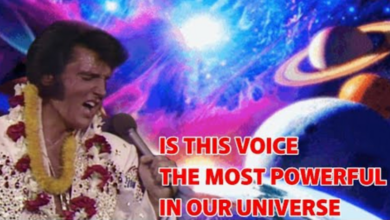Elvis Stands Above All Legends And Genres, Transcending Everything; Nobody Will Match Him
Elvis Presley’s performance of “Burning Love” during the Aloha From Hawaii concert in 1973 remains one of the most iconic moments in his career. This concert, broadcast live via satellite, was the first of its kind, reaching an estimated 1.5 billion viewers across 40 countries. The event took place at the Honolulu International Center in Honolulu, Hawaii, on January 14, 1973. This performance was a testament to Elvis’s enduring popularity and his ability to captivate audiences worldwide.
“Burning Love” was one of Elvis’s most successful songs of the early 1970s. Written by Dennis Linde, the song was originally recorded in 1972 and became a significant hit, peaking at number two on the Billboard Hot 100 chart. The live rendition in Hawaii showcased Elvis’s energetic and charismatic stage presence, solidifying the song’s place in rock and roll history. His powerful vocals and the dynamic arrangement of the band made this performance unforgettable.
The Aloha From Hawaii concert was meticulously planned, reflecting Elvis’s commitment to delivering a flawless performance. The stage design, lighting, and sound were all state-of-the-art for the time, contributing to the show’s overall impact. Elvis’s wardrobe for the concert, especially the American Eagle jumpsuit, became iconic, symbolizing his larger-than-life persona. The jumpsuit, adorned with rhinestones and an eagle design, highlighted his status as the “King of Rock and Roll.”
Elvis’s performance of “Burning Love” in this concert also demonstrated his versatility as an artist. Despite being known primarily for his rock and roll hits, Elvis seamlessly blended various musical styles, including rock, gospel, and ballads, into his repertoire. This versatility was evident in the Aloha From Hawaii concert, where he performed a diverse setlist that included classics like “Hound Dog,” “Suspicious Minds,” and “Can’t Help Falling in Love.”
The success of the Aloha From Hawaii concert had a lasting impact on Elvis’s career. It reinforced his status as a global superstar and showcased his ability to innovate and adapt to new trends in the music industry. The concert’s success also paved the way for future satellite broadcasts of live performances, setting a precedent for how concerts could reach a global audience.
Elvis Presley, born on January 8, 1935, in Tupelo, Mississippi, rose to fame in the mid-1950s with his unique blend of rock and roll, country, and rhythm and blues. His charismatic stage presence, distinctive voice, and good looks made him a cultural icon and a symbol of the American rock and roll movement. Throughout his career, Elvis released numerous hit singles, starred in several successful films, and performed countless live shows, cementing his legacy as one of the most influential musicians of the 20th century.
Elvis’s personal life was marked by both triumphs and challenges. He married Priscilla Beaulieu in 1967, and the couple had one daughter, Lisa Marie Presley. Despite his professional success, Elvis struggled with health issues and substance abuse, which ultimately contributed to his untimely death on August 16, 1977, at the age of 42. Nevertheless, his music and legacy continue to inspire generations of fans and musicians around the world.
The legacy of Elvis’s Aloha From Hawaii concert endures, not only as a significant achievement in his career but also as a landmark moment in the history of live music broadcasting. It exemplified the possibilities of technology in connecting artists with audiences across the globe. Elvis’s performance of “Burning Love” during this concert remains a vivid reminder of his talent, charisma, and the enduring appeal of his music.



